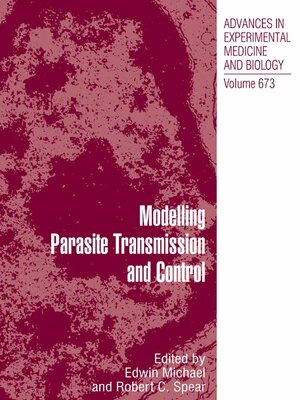Modelling Parasite Transmission and Control
ebook ∣ Advances in Experimental Medicine and Biology
By Edwin Michael

Sign up to save your library
With an OverDrive account, you can save your favorite libraries for at-a-glance information about availability. Find out more about OverDrive accounts.
Find this title in Libby, the library reading app by OverDrive.



Search for a digital library with this title
Title found at these libraries:
| Loading... |
It is clear that many fascinating problems still remain to be addressed in parasite transmission modelling, from better understanding of transmission processes and natural history of infection to investigating the impact of ecological and spatial scales, climate change, host immunity and social behaviour, parasite-host evolutionary dynamics and parasite community ecology on parasite transmission. This book captures some of the advances made in recent years and provides indications of ways forward for addressing these questions by shedding light on developments in conceptual frameworks and modelling tools as well as the emergence of new data forms for aiding model construction, testing and analysis. Another important advance has been the parallel development of robust computationally-intensive statistical methods to allow model testing and parameterization by aiding the fitting of models to complex data. This is an exciting area of work, which we believe will broaden the scope of mathematical modelling in investigating parasite transmission processes. In particular, we expect this advance will now allow modellers to begin the successful development and analysis of mechanistically-rich models of parasite transmission that will facilitate better integration of the variety of mechanisms increasingly recognized as important in simultaneously affecting transmission, including abiotic processes, trophic and evolutionary interactions, movement in space, and behaviour and even
physiology of the individual. We foresee a continuing bright future for using mathematical modelling to clarify parasite transmission dynamics and address problems related to effective parasite control. Ultimately, through this improved application of models to research and management, we expect that parasite control would be an achievable goal bringing benefits to a vast number of our fellow human beings.






